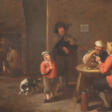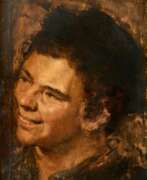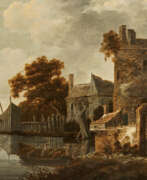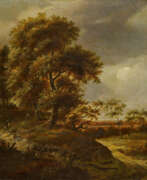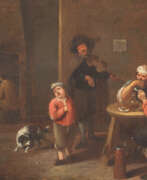Haarlem School

Haarlem School
The Haarlem School was a significant movement in Dutch art, recognized for its contribution to painting and culture during the Dutch Golden Age. This school of art, originating from Haarlem in the Netherlands, was prominent in the late 16th and early 17th centuries. The artists of the Haarlem School, also known as Haarlem Mannerists, were known for their unique style, which blended a keen awareness of style with cultivated elegance. Their works often featured exaggerated muscular figures, dramatic themes, and a detailed richness that departed from naturalism. This approach was influential in shaping the artistic styles of the era.
One notable feature of the Haarlem School was its focus on genre scenes over religious themes. This shift was partly due to the religious diversity in the Northern Provinces of the Netherlands, which contrasted with the more religiously uniform Southern regions. The artists of the Haarlem School capitalized on this environment to produce art that included domestic interiors and scenes of everyday life, often with moralistic or emblematic meanings. This focus on genre scenes was a significant departure from the predominantly biblical themes prevalent in other parts of Europe during that time.
Prominent artists associated with the Haarlem School included Frans Hals, known for his portrait work; Judith Leyster, one of the first women to achieve master status in the art world; and Hendrick Goltzius, whose work in engraving played a pivotal role in the development of Haarlem Mannerism. These artists, among others, contributed to the rich tapestry of Dutch art, making the Haarlem School a crucial part of art history.
Significantly, the Haarlem School's influence extended beyond just painting. The Guild of St. Luke in Haarlem, which included various artists, played an essential role in forming rules and regulations for artists, thereby shaping the broader artistic and cultural landscape of the time.
For art collectors and experts in antiques, understanding the Haarlem School's impact is essential. Its unique style and historical significance make it a fascinating study within the realm of Dutch art. To explore more about the Haarlem School and its works, one might visit the Frans Hals Museum in Haarlem, which houses a collection of artworks from this era and offers immersive experiences about the artists and their techniques.
If you're interested in receiving updates on new product sales and auction events related to the Haarlem School, I encourage you to sign up for our newsletter. This subscription will keep you informed about the latest developments and opportunities in this fascinating area of art history.
| Country: | The Netherlands |
|---|---|
| Start of the period: | XVI century |
| End of the period: | XVII century |
